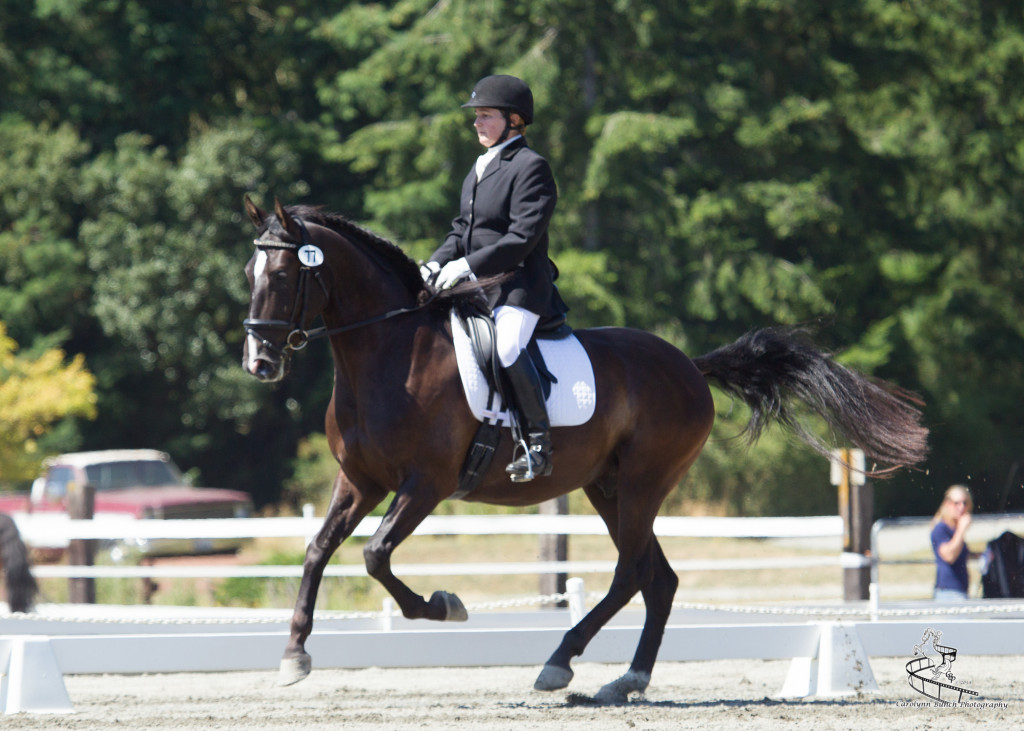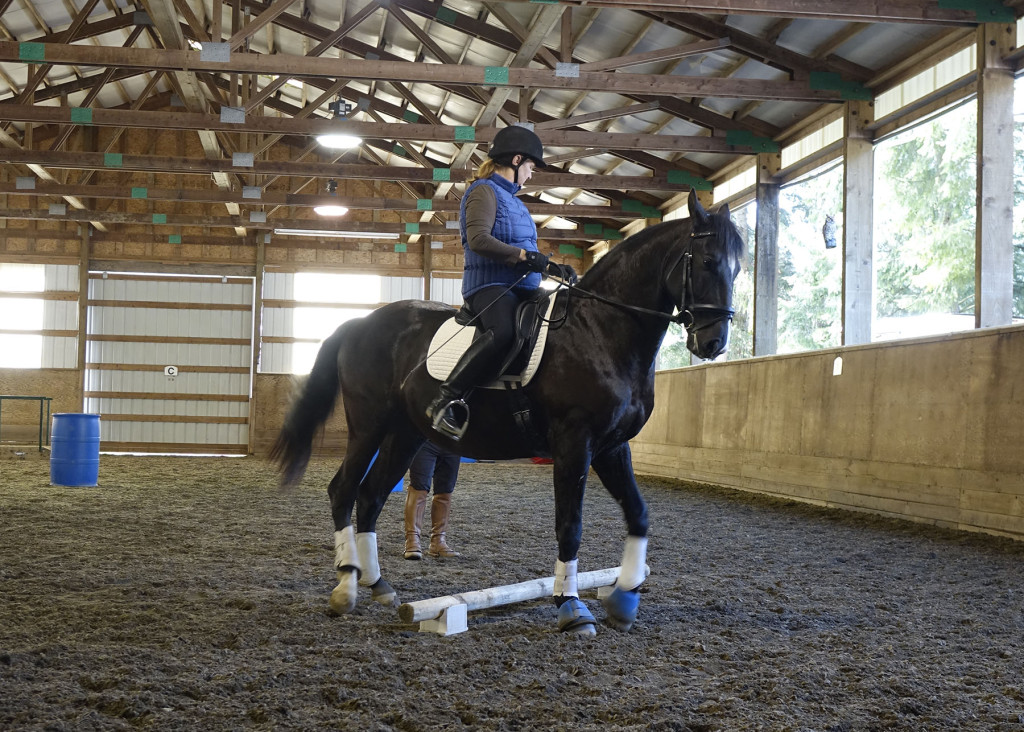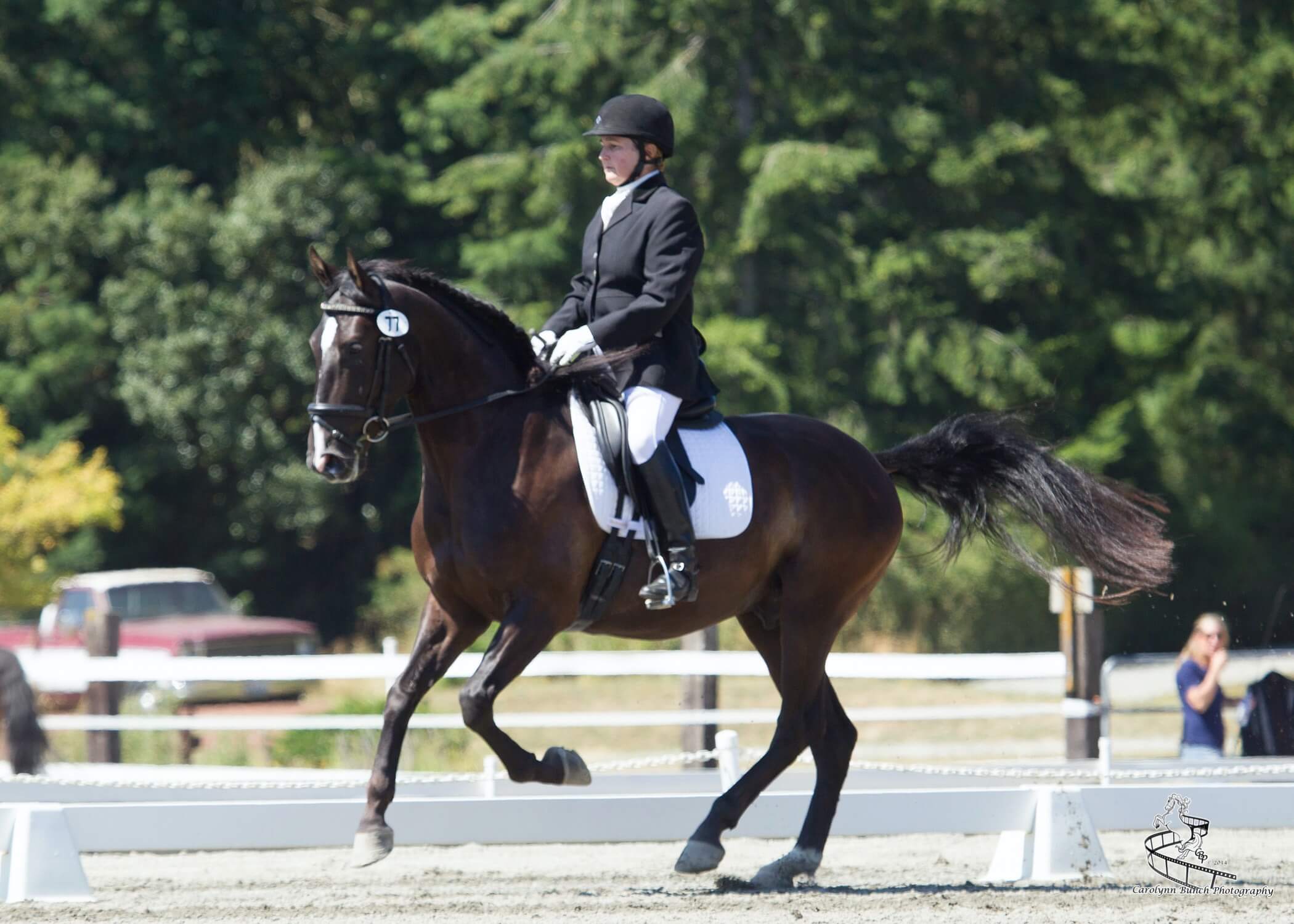The Dressage Phase
by Kim Roe
As a dressage trainer and rider, I became interested in the discipline of working equitation because it includes a dressage phase. I appreciate the harmony between horse and rider that is developed in dressage, and the way that good dressage work can transform almost any horse into a more beautiful, balanced, supple and strong athlete. Working equitation competitions have four trials or phases: Dressage, Ease of Handling and the Speed phases are required at all competitions in the United States. At some competitions a fourth phase, Cattle Handling, is offered.
This month I will give a brief description of the dressage phase and answer some common questions. In order to keep it simple, I will be discussing the tests used by the Working Equitation International Association of the USA (WEIAUSA). The rules, and the tests, can be found at their website: http://www.weiausa.com/
-
What is dressage, and why is it included in W.E.?
Dressage simply means “training” in French. It is a centuries-old way of training horses that uses a systematic and logical way of developing a horse from a green youngster to an advanced riding horse. Well trained dressage horses are elastic, supple, responsive and obedient. They should be light, (uphill), engage their hindquarters, have paces that are rhythmic and cadenced and move freely forward. A good dressage horse should also be agile and maneuverable. These qualities are important in a working equitation horse, too. Dressage training allows the other phases of working equitation to maintain a beautiful dance-like quality between the rider and horse.

-
How is dressage judged?
Each written test has movements that are scored from 0 – 10 and the judge gives comments that explain their scores. The movements at each level build a foundation for the next level, and the movements in the test coincide with what will be required of the horse in the Ease of Handling and Speed phases, where they will work over and through obstacles. Also included on the test sheet are the “collective marks” where the judge gives scores and comments for their overall impression of the test. Collective marks are given for paces, impulsion, submission, rider and presentation (tack and attire). Each rider receives their test sheet after their test is judged which allows for learning and progressing up the levels. In working equitation, there are rules regarding advancement.
-
What are the levels?
The working equitation levels are in this order: introductory, novice, intermediate, advanced and masters. The masters level is very close to what one would see in an international working equitation competition. There are also tests for youth (under 13 years) and junior (between 13 and 18 years).
-
How are the Working Equitation dressage tests different or similar to the United States Equestrian Federation (USEF) dressage tests?
Some of the WE tests are quite similar to our USEF tests. They are performed in a small dressage court (20 x 40 meters) with the familiar letters, until the master’s level when the letters are removed. Introductory level is very much like our training level, with 20 meter trot and canter circles. A difference is it includes 5 meter half circles in the walk, rein back and the trot stretch down is on the diagonal. Novice is similar to first level, although there are no lengthenings in the trot or canter, and intermediate is similar to second level with medium trot and canter, half-pirouettes in the walk and simple changes. The biggest difference here is half-passes in the walk. Things get quite different at the advanced and masters levels. Advanced has no trot work and one must ride an extended canter to a halt. The test also calls for a turn-around at canter that is similar to a pirouette, but not called a pirouette. At both the advanced and masters levels the rider must ride with one hand on the reins and the tests include flying changes. In the masters level they do all 3 gaits, but the letters have been removed from the arena.

In March I took my young Lusitano, Exodus, to a working equitation clinic with Portuguese trainer Nuno Matos. My goal was to learn more about the requirements of the obstacle work in both the ease of handling and speed phases. Exodus’ first job is as a dressage horse and he understands the basics of the lateral movements: leg yielding, turn on the forehand, turn on the haunches, shoulder-in, haunches-in (travers), and haunches-out (renvers). He also knows how to do a simple rein-back. With these tools he was able to easily negotiate all the obstacles at the walk, though he’d never done any of them before attending this clinic. For instance, to open and close a gate, your horse needs to be able to leg-yield, do a turn on the forehand, back up, and do a turn on the haunches. In order to go over a bridge, your horse must be obedient to your forward driving aids, and to side-pass over a pole, your horse needs to understand leg-yield, and maintain his rhythm.
All of the obstacle work depends on the quality of the dressage work. Of course, your horse must also trust you, or fear may keep him away from the strange obstacles. Now that Exodus has seen the obstacles and has an understanding of what I want him to do with them, it will just be a matter of practicing until we can negotiate them with more speed and precision as we move onto the next two phases. Next month: The Ease of Handling phase.

Kim Roe grew up riding on the family ranch and competed in Western rail classes, trail horse, reining, working cow, and hunter/jumper. She trained her first horse for money at 12 years old, starting a pony for a neighbor.
Kim has been a professional dressage instructor in Washington state for over 30 years, training hundreds of horses and students through the levels. In recent years Kim has become involved in Working Equitation and is a small ‘r’ Working Equitation judge with WE United.
Kim is the editor of the Northwest Horse Source Magazine, and also a writer, photographer, and poet. She owns and manages Blue Gate Farm in Deming, Washington where she continues to be passionate about helping horses and riders in many disciplines.








